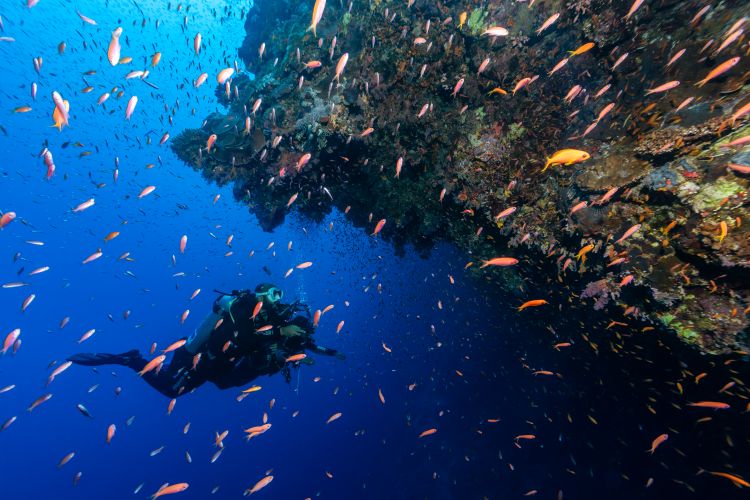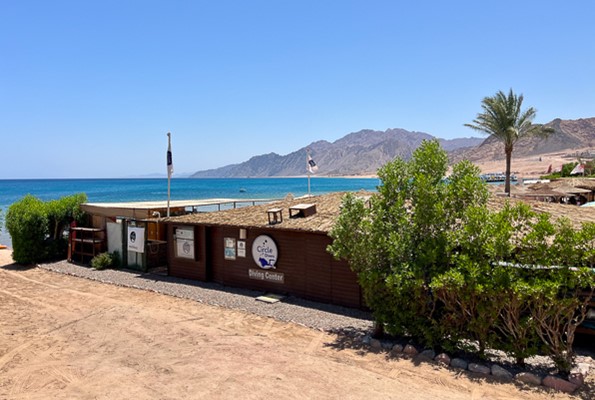Discover Diving in Sharm El Sheikh: A Guide for All Levels

Sharm el-Sheikh is a
world-renowned diving destination that attracts divers of all skill levels. Its
vibrant underwater landscapes, warm, crystal-clear waters, and easy access to
some of the planet’s best dive sites make it a top choice for underwater
adventurers. Whether you're drawn to colourful coral reefs, legendary
shipwrecks, or exhilarating drift dives, Sharm el-Sheik offers something for
every diver.
Top Dive Sites in
Sharm El Sheikh
With around 30 dive
sites accessible by day trips—some more are even available via shore
dives—Sharm el-Sheik is a diver’s paradise. Here are some of the most iconic
and recommended locations:
• SS Thistlegorm
Wreck
This legendary World War II wreck is one of the most famous dive sites in the
world. The British cargo ship sank in 1941 after a German airstrike and now
rests at a depth of about 30 meters. It's packed with wartime
relics—motorcycles, trucks, rifles, and more—making it a fascinating underwater
museum. Due to its depth, potential currents, and low visibility, this site is
best suited for experienced divers with advanced certification. Two dives are
typically needed to explore it fully.
• Ras Mohammed
National Park
A must-visit for any diver in the region, Ras Mohammed is a protected marine
reserve that spans 480 square kilometers. It boasts more than 220 coral species
and over 1,000 species of fish. Top dive spots include:
- Shark and Yolanda Reef – Encounter sharks, turtles, barracuda,
and jacks alongside a quirky cargo spill of toilets from a sunken
freighter.
- Anemone City – Home to fields of swaying anemones and
playful clownfish.
The marine life here is rich and diverse, offering incredible photo opportunities and unforgettable experiences.
• Straits of Tiran
Located at the mouth of the Gulf of Aqaba, this site includes four stunning
reefs—Jackson, Woodhouse, Thomas, and Gordon. These dives feature dramatic
coral formations, walls that plunge into the deep, and strong currents that
attract big fish. Expect sightings of reef sharks, rays, tuna, Napoleon wrasse,
lionfish, and moray eels.
• Local Dive Sites
For beginner divers or those looking for a more relaxed experience, several
shore-accessible sites offer excellent conditions:
- Ras Um Sid – Known for its vibrant coral gardens and
abundant reef fish.
- Ras Katy – Spot octopuses, cuttlefish, scorpionfish, and nudibranchs.
- Ras Nasrani – Explore coral pinnacles, caves, and
tunnels in calm waters.
Planning Your Dive
Trip
Sharm El Sheikh is
located at the southern tip of Egypt’s Sinai Peninsula. It’s easily accessible
via its international airport, with direct flights from many European cities and
over 35 direct flights a week from the UK alone.
Best Time to Dive:
- March to May and September to November offer
ideal diving conditions, with water temperatures around 25°C (77°F) and
air temperatures near 30°C (86°F).
- Summer months are warmer and busier but still great for diving.
- Winter is quieter but may bring stronger winds that reduce visibility.
We offer a range of
services including scuba courses, equipment rentals, daily boat trips, shore
dives, and land safari trips—catering to all experience levels and budgets.
Tips for an
Enjoyable Diving Experience
To make the most of
your dives in Sharm El Sheikh, keep these tips in mind:
• Inspect Your
Equipment
Whether renting or bringing your own gear, ensure everything is in good
condition. If in doubt, consult your dive center for help with setup and safety
checks.
• Choose the Right
Site
Select dive locations based on your certification, experience, and interests.
Check current conditions such as visibility, currents, and marine life
activity. Dive centers and guides can provide valuable insight.
• Follow the Rules
Always respect diving regulations and marine park guidelines. Avoid touching or
disturbing marine life, and never dive beyond your limits. Diving with a buddy
and following safety procedures is essential.
• Enjoy Every
Moment
Sharm El Sheikh offers some of the most beautiful and biologically diverse
underwater environments in the world. Take time to appreciate the scenery, and
if you can, document your dive with photos or video to share the experience
with others.


